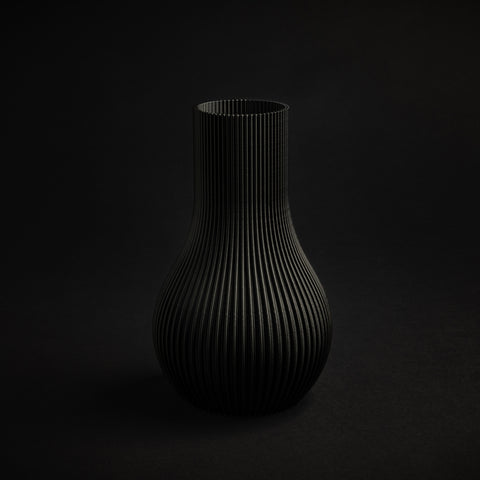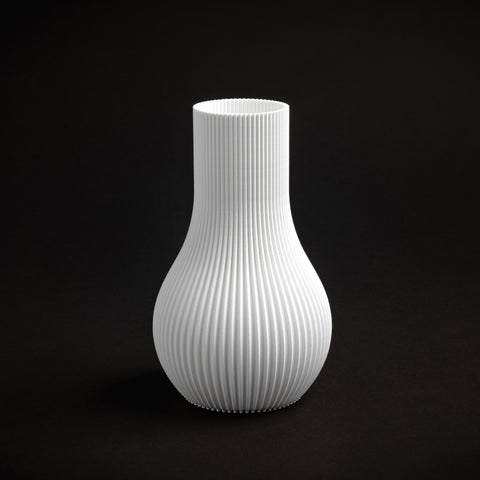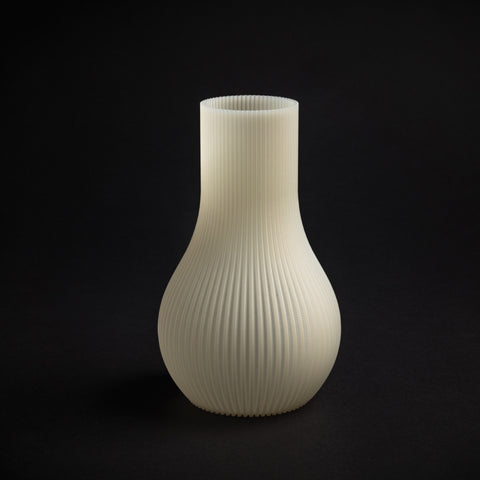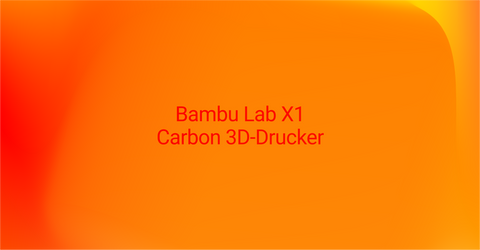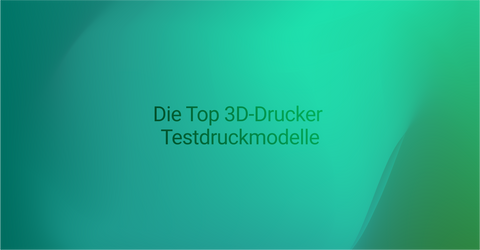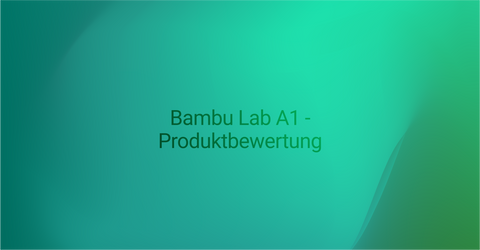
In recent years, 3D printing technology has made a huge breakthrough and revolutionized the way things are made. A key component of this technology is the 3D printer filament. In this article we will explain everything you need to know about 3D printer filament.
Basics of 3D printer filament
To fully understand the concept of 3D printer filament, we first need to clarify what it actually is. 3D printer filament is essentially the material that is placed into the 3D printer to print the desired object. It is a type of plastic thread that is melted through a hot extrusion process and then built up layer by layer to form the 3D model.
Now you may be wondering how exactly 3D printer filament works. The entire process begins with loading the filament into the printer. The filament is then heated in the extruder until it melts. Once the filament is melted, it is extruded through a nozzle and applied to a build platform. Layer by layer, the melted filament hardens and forms the desired object.
Choosing the right filament is crucial to the success of 3D printing. There are different types of filaments on the market including PLA (Polylactide), ABS (Acrylonitrile Butadiene Styrene), PETG (Polyethylene Terephthalate) and many more. Each filament has its own properties and benefits.
PLA is one of the most popular filaments for 3D printing. It is biodegradable and environmentally friendly. PLA filament is easy to print and produces smooth surfaces. It is ideal for use in applications such as prototyping, model making and art projects.
ABS filament is known for its high strength and durability. It is resistant to heat and chemicals, making it a good choice for functional pieces. ABS filament is widely used in automotive, electronics and other industries.
PETG filament combines the advantages of PLA and ABS. It is strong, flexible and has high impact resistance. PETG filament is well suited for mechanical parts, housings and containers.
There are also special filaments such as wood filament, metal filament and conductive filament. These filaments contain particles of wood, metal or conductive materials to create unique effects and functions.
When buying 3D printer filament, it is important to pay attention to the correct diameter size. The most common diameters are 1.75 mm and 2.85 mm. Make sure the diameter of the filament is compatible with the diameter of the printer.
Color selection is another important factor when purchasing filament. There is a wide range of colors available, from vibrant and bright colors to neutral and natural tones. Choose a color that suits your project or your personal taste.
To get the most out of your 3D printing project, it is also important to use the correct printing settings. The printing temperature, printing speed and layer thickness are just some of the parameters that can be adjusted to achieve optimal results.
Overall, the 3D printer filament offers a variety of possibilities for creative projects and functional applications. With the right selection of filaments and the right printing settings, you can create amazing 3D models and objects.
Different types of 3D printer filament
There are different types of 3D printer filament, each with their own unique properties and uses. The most popular types are ABS filament, PLA filament and PETG filament.
ABS filament
ABS filament, which is made of acrylonitrile butadiene styrene, is a widely used filament. It has high strength and is very durable. ABS filament can be used for both indoor and outdoor use and is known for its good impact resistance.
Another advantage of ABS filament is its high temperature resistance. It can withstand high temperatures without melting or losing its shape. This makes it ideal for applications where heat resistance is required, such as building prototypes for automotive parts.
ABS filament is also available in a variety of colors, making it a popular choice for creative projects. It can be easily painted and refinished to achieve the desired look.
PLA filament
PLA filament, which is made from polylactic acid, is an environmentally friendly filament. It is biodegradable and is made from renewable raw materials, such as corn starch or sugar cane. PLA filament is also easy to print and creates a smooth surface.
Another advantage of PLA filament is its low deformation during the printing process. It is less likely to warp or shrink, resulting in more precise printing results. This makes it ideal for use in the architecture and design industries where accuracy and attention to detail are required.
PLA filament is available in a variety of colors and can also be transparent. This allows users to print creative and colorful objects that are ideal for decoration purposes.
PETG filament
PETG filament, which is made from polyethylene terephthalate, combines the best properties of ABS and PLA filament. It is very robust and flexible at the same time. PETG filament is well suited for applications such as toys, packaging and mechanical parts.
One of the outstanding properties of PETG filament is its transparency. It can be made in different degrees of transparency, from transparent to opaque. This makes it ideal for use in the packaging industry where clear and visible packaging is required.
PETG filament is also resistant to moisture and chemicals, making it a good choice for use in environments where these factors play a role, such as laboratories or the food industry.
Choosing the right 3D printer filament
There are several factors to consider when choosing the right 3D printer filament. First, you need to consider your requirements for the printed object. Do you need high strength or flexibility? Does the object have to be weatherproof? These questions are crucial for choosing the right filament.
For example, if you want to print an object that needs to withstand heavy loads, a high-strength filament such as ABS or nylon is recommended. These materials are known for their robustness and durability. On the other hand, if you want to print a flexible object that can bend and stretch, you should choose a TPU filament.
Another important factor is the compatibility of the filament with your 3D printer. Not all filaments are suitable for every printer. You should therefore always check the manufacturer's recommendations for your specific model. For example, some printers are only compatible with certain types of filament, while others support a wider range of materials.
The importance of filament quality should also not be underestimated. Cheap filament can lead to poor printing results and damage the printer. It is therefore advisable to use high-quality filament from trusted manufacturers. These typically offer better print quality and greater reliability.
When choosing the right filament, you should also consider the environmental conditions the printed object will be exposed to. For example, if the object will be used outdoors, it is important to choose a weather-resistant filament that can withstand UV rays and moisture. PLA filament is a good choice for outdoor use because it has good weather resistance.
Ultimately, it's important to try different filaments and experiment with your 3D printer's settings to get the best result. Each filament has its own properties and may require specific printing settings to achieve optimal results.
Care and storage of 3D printer filament
To ensure optimal print quality, proper care and storage of the 3D printer filament is crucial.
A well-maintained and properly stored filament is the key to successful 3D printing projects. Here are some tips and tricks to keep your filament in top condition.
Tips for proper storage
The filament should be stored in a cool and dry place to avoid moisture. Moisture can affect the filament and lead to undesirable printing results.
It is advisable to store the filament in airtight containers or special storage boxes to protect it from humidity. These containers can come in different sizes and shapes and allow you to store your filament rolls safely and organized.
Another important aspect of storage is avoiding direct sunlight. UV rays can damage the filament and reduce its quality. Make sure your filament rolls are stored in a place protected from sunlight.
To maximize the durability of your filament, you should also make sure it is protected from dust and dirt. If necessary, use dustproof containers or store the filament in its original packaging.
Common problems and solutions
Sometimes problems such as clogging or detachment can occur when using 3D printer filament. These issues can be frustrating, but there are various solutions you can try to resolve them.
If your filament is clogged, it may help to clean the nozzle. Carefully remove the filament and clean the nozzle thoroughly to remove any debris. Make sure the nozzle is free of debris before reinserting the filament.
Another possible reason for printing problems is an incorrect print setting. Check your print settings and make sure they meet the requirements of the filament you are using. Different types of filament require different temperatures and speeds to achieve optimal results.
It is also advisable to regularly check the extrusion speed and filament diameter. Incorrect setting of these parameters can result in peeling or uneven printing.
If, despite your best efforts, you still have problems with your filament, you can also contact the manufacturer or search online forums for advice. Often there are experienced users who can help you solve problems.
Environmental sustainability of 3D printer filament
Another important topic is the environmental impact of 3D printer filament. The traditional filaments such as ABS can be harmful to the environment as they are not biodegradable and can release harmful fumes during printing.
Sustainable alternatives to conventional filaments
Fortunately, there are now sustainable alternatives to conventional filaments. For example, there are biodegradable filaments that are made from renewable resources. These filaments are more environmentally friendly and do not contain harmful chemicals.
Recycling 3D printer filament
To further reduce the ecological footprint, it is also possible to recycle 3D printer filament. There are companies and initiatives that collect and recycle used filament to produce new filament. Recycling is an effective way to reduce material consumption and avoid waste.
Overall, 3D printer filament offers a variety of possibilities for creative projects and manufacturing applications. By understanding the different types of filaments and carefully selecting and caring for your filament, you can achieve optimal printing results while protecting the environment. This way you can exploit the full potential of your 3D printer.
